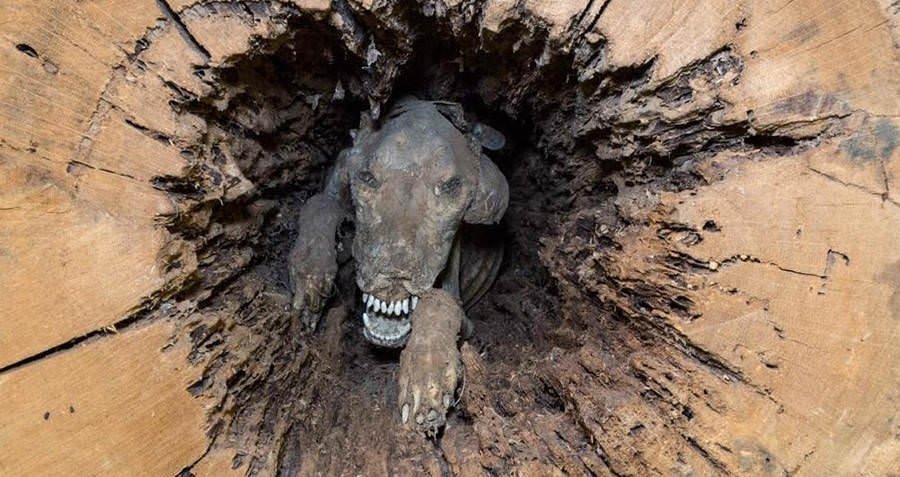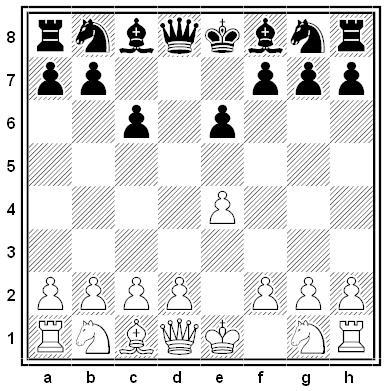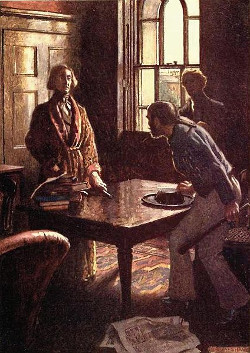From a Russian puzzle collection:
Is it possible to bake a cake that can be divided into four parts by a single straight cut?
From a Russian puzzle collection:
Is it possible to bake a cake that can be divided into four parts by a single straight cut?

Loggers with the Georgia Kraft Corp. were cutting down a chestnut oak in southern Georgia in the 1980s when they discovered the mummified remains of a dog inside the hollow trunk. Experts determined that it was most likely a hunting dog that had pursued some quarry up through the hollow tree sometime in the 1960s. The dog had wedged itself into the narrowing trunk and, unable to turn around, eventually perished 28 feet above ground level. But chestnut oak contains tannin, a natural desiccant that stopped microbial activity, and the dog’s position and a natural updraft through the trunk prevented other animals from scenting or reaching it. So it just remained there for 20 years, waiting to be found.
The mummified dog, now known as “Stuckie,” is on display at the Southern Forest World museum in Waycross, Georgia.
“I am reminded of the professor who, in his declining hours, was asked by his devoted pupils for his final counsel. He replied, ‘Verify your quotations.'” — Winston Churchill

Kenya and Uganda both lie on the equator, so the sun rises around 6 a.m. and sets around 6 p.m. throughout the year. Given such a reliable natural timekeeper, it’s customary to reckon time by counting hours of light or hours of darkness: 7 a.m. is called 1 o’clock (saa moja, or one hour of light), and 11 a.m. is called 5 o’clock (saa tano) (moja means 1 and tano 5 in Swahili). Similarly, 7 p.m. is called 1 o’clock (one hour of darkness), and 11 p.m. is 5 o’clock.
Confusingly for newcomers, clocks themselves are set to Western time, but they’re read aloud in “Swahili time.” Increasingly, though, Africans are simply conforming to Western conventions.

Tibor Orbán offered this puzzle in Die Schwalbe in 1976. The position above can be reached in exactly 3 moves in several ways — for example:
1. e4 c6 2. Bb5 e6 3. Bxc6 dxc6
1. e4 e6 2. Bc4 c6 3. Bxe6 dxe6
How can it be reached in exactly 4 moves?
https://www.youtube.com/watch?v=TlLxUYKldHk
For about two weeks each February, the last rays of the setting sun set Yosemite’s Horsetail Fall glowing orange and red.
The effect is best seen from a clearing close to the picnic area on the north road leading out of the valley east of El Capitan.
Shanghai’s Urban Planning Exhibition Center contains a 1:500 scale model of the city, showing all existing and approved buildings according to the city’s master plan for 2020.
The model measures about 5,200 square feet, or 480 square meters, but even at that size it covers only the central part of the city, within the Inner Ring Road, an area about 9 miles by 5 miles. The full city is about 58 miles by 55 miles, with three more expressway rings beyond the inner ring.
Because the exhibition center is itself located within the central district, the model contains a miniature replica of its own building. Ideally that replica would contain its own, doubly tiny scale model of the city, but I guess there’s no way to check.
(Thanks, Jim.)

A mouse wants to eat his way through a 3 × 3 × 3 cube of cheese, starting in one of the corners and tunneling through all 27 1 × 1 × 1 sub-cubes, visiting each once. Can he arrange his route so that he finishes at the center of the cube? Assume that he always moves between orthogonally adjacent cubes, traveling through walls but not through edges or corners.

Edgar Allan Poe’s “The Murders in the Rue Morgue” is credited with being the first modern detective story — biographer Jeffrey Meyers says it “changed the history of world literature.” The story established the convention of the brilliant investigator who unveils a climactic revelation before explaining the reasoning that led him to it. The lead character, C. Auguste Dupin, served as a prototype for fictional detectives from Sherlock Holmes to Hercule Poirot.
But Poe himself thought the praise was overblown. “These tales of ratiocination owe most of their popularity to being something in a new key,” he wrote. “People think them more ingenious than they are — on account of their method and air of method. In the ‘Murders in the Rue Morgue,’ for instance, where is the ingenuity in unraveling a web which you yourself … have woven for the express purpose of unraveling?” The brilliance of a detective story is transparently contrived, he said: “The reader is made to confound the ingenuity of the suppositious Dupin with that of the writer of the story.”

In May 1861, Union troops occupied Arlington House, Robert E. Lee’s mansion overlooking the capital. When Lee’s wife Mary Custis Lee wrote to the army expressing her concern about the house’s safety, she received this reply:
Mrs. R.E. Lee:
MADAM: Having been ordered by the Government to relieve Major-General Sandford in command of this department, I had the honor to receive this morning your letter of to-day, addressed to him at this place.
With respect to the occupation of Arlington by the United States troops, I beg to say it has been done by my predecessor with every regard to the preservation of the place. I am here temporarily in camp on the grounds, preferring this to sleeping in the house, under the circumstances which the painful state of the country places me with respect to its proprietors.
I assure you it has been and will be my earnest endeavor to have all things so ordered that on your return you will find things as little disturbed as possible. In this I have the hearty concurrence of the courteous, kind-hearted gentleman in the immediate command of the troops quartered here, and who lives in the lower part of the house to insure its being respected.
Everything has been done as you desired with respect to your servants, and your wishes, as far as they are known or could be anticipated, have been complied with. When you desire to return, every facility will be given you for so doing.
I trust, madam, you will not consider it an intrusion if I say I have the most sincere sympathy for your distress, and that, as far as is compatible with my duty, I shall always be ready to do whatever may alleviate it.
I have the honor to be, very respectfully, your most obedient servant,
Irvin McDowell
P.S. — I am informed it was the order of the General-in-Chief, if the troops on coming here found the family in the house, that no one should enter it, but that a guard should be placed for its protection.
The Union troops erected tents, dug latrines, and felled trees on the 1,100-acre plantation, but they left the house relatively untouched.